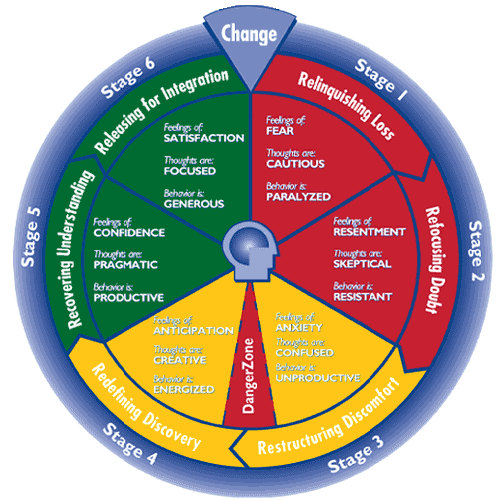THE TOOLKIT
Change Cycle
Change is personal. Many organizations that undergo change management initiatives focus on the process or procedural elements of change. However, the reason why most change fails is related to the emotional and personal acceptance and integration of the people dealing with the change. Interchange International developed the Change Cycle below to help people understand the stages of change and how to work through them.

Stage 1 – Loss
In Stage 1 you admit to yourself that regardless of whether or not you perceive the change to be good or ‘bad” there will be a sense of loss of what “was.”
Stage 2 – Doubt
In this stage, you doubt the facts, doubt your doubts and struggle to find information about the change that you believe is valid. Resentment, skepticism, and blame cloud your thinking.
Stage 3 – Discomfort
You will recognize Stage 3 by the discomfort it brings. The change and all it means has now become clear and starts to settle in. Frustration and lethargy rule until possibility takes over.
The Danger Zone
The Danger Zone represents the pivotal place where you make the choice either to move on to Stage 4 and discover the possibilities the change has presented or to choose fear and return to Stage 1.
Stage 4 – Discovery
Stage 4 represents the “light at the end of the tunnel.” Perspective, anticipation, and a willingness to make decisions give a new sense of control and hope. You are optimistic about a good outcome because you have choices.
Stage 5 – Understanding
In Stage 5, you understand the change and are more confident, think pragmatically, and your behavior is much more productive. You begin to make accomplishments.
Stage 6 – Integration
By this time, you have regained your ability and willingness to be flexible. You have insight into the ramifications, consequences and rewards of the change — past, present, and future. But, be aware, more change is just around the corner.



